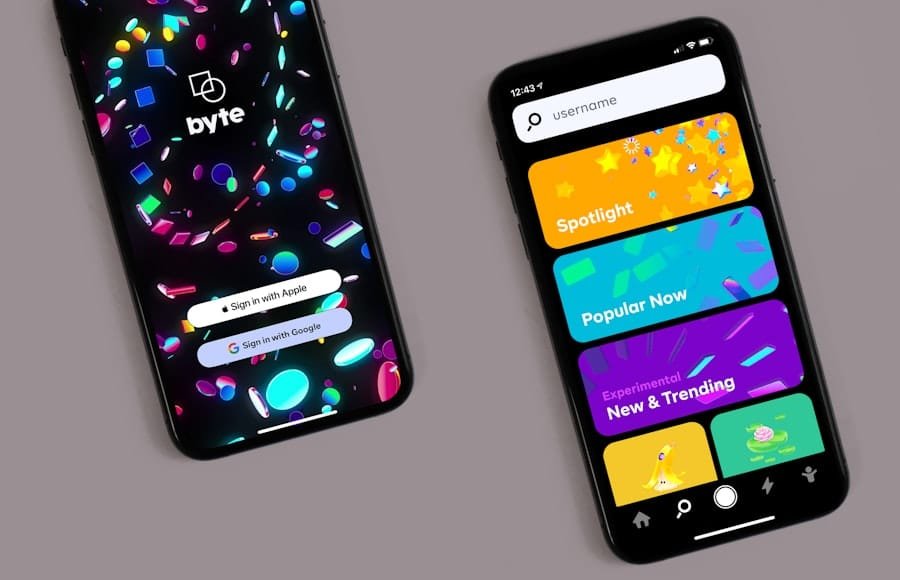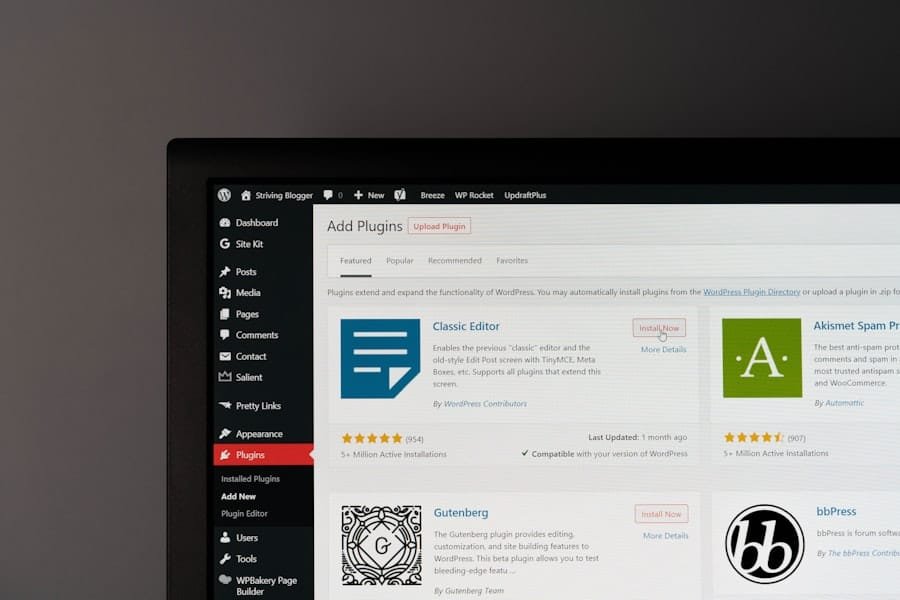Enhance User Experience with Drag-and-Drop
In the ever-evolving landscape of digital interaction, drag-and-drop functionality has emerged as a pivotal feature that enhances user engagement and…
In the ever-evolving landscape of digital interaction, drag-and-drop functionality has emerged as a pivotal feature that enhances user engagement and streamlines workflows. This intuitive method allows users to select an object or element on a screen, drag it to a different location, and drop it there, all with a simple mouse or touch gesture. The concept may seem straightforward, yet its implications for user experience are profound.
As you navigate through various applications and websites, you may find that this feature not only simplifies tasks but also makes interactions feel more natural and fluid. The origins of drag-and-drop can be traced back to early graphical user interfaces, where it was introduced as a means to facilitate file management and organisation.
As you delve deeper into the world of drag-and-drop, you will discover how this feature has become an integral part of modern design, enhancing usability and fostering a more interactive experience for users.
Summary
- Drag-and-drop is a user interface action that involves selecting a virtual object and dragging it to a different location or onto another virtual object.
- The benefits of drag-and-drop for user experience include increased interactivity, intuitive interaction, and improved efficiency in completing tasks.
- To implement drag-and-drop in your website or app, you can use HTML5, JavaScript libraries, or drag-and-drop frameworks to create a seamless user experience.
- Best practices for designing drag-and-drop interactions include providing visual feedback, ensuring compatibility with touch devices, and maintaining consistency in design across different platforms.
- Accessibility considerations for drag-and-drop involve providing alternative methods for users who cannot perform drag-and-drop actions, such as keyboard shortcuts or voice commands.
Benefits of Drag-and-Drop for User Experience
Enhanced User Experience
One of the most significant advantages of drag-and-drop functionality is its ability to create a more engaging user experience. When you interact with an interface that employs this feature, you are likely to feel a sense of control and empowerment. The tactile nature of dragging and dropping elements allows you to manipulate content in a way that feels direct and immediate.
Increased Satisfaction and Reduced Cognitive Load
This hands-on approach can lead to increased satisfaction, as users often prefer interfaces that respond intuitively to their actions. Moreover, drag-and-drop can significantly reduce the cognitive load associated with complex tasks. Instead of navigating through multiple menus or options, you can simply click, drag, and drop to achieve your desired outcome.
As you engage with applications that utilise this feature, you may find that your productivity increases, allowing you to focus on what truly matters rather than getting bogged down by cumbersome navigation.
How to Implement Drag-and-Drop in Your Website or App

Implementing drag-and-drop functionality in your website or application may seem daunting at first, but with the right tools and frameworks, it can be a straightforward process. If you are developing a web application, you might consider using JavaScript libraries such as jQuery UI or React DnD. These libraries provide pre-built components that simplify the implementation of drag-and-drop features, allowing you to focus on customising the user experience rather than reinventing the wheel.
To get started, you will need to define the elements that will be draggable and the areas where they can be dropped. This involves setting up event listeners for mouse or touch events that will trigger the dragging action. Once you have established these elements, you can enhance the interaction by providing visual feedback during the drag process, such as changing the appearance of the item being dragged or highlighting potential drop zones.
By carefully considering these aspects, you can create a seamless drag-and-drop experience that feels intuitive and responsive.
Best Practices for Designing Drag-and-Drop Interactions
| Best Practices for Designing Drag-and-Drop Interactions |
|---|
| 1. Provide visual cues for draggable items |
| 2. Use clear and concise instructions |
| 3. Ensure compatibility with touch devices |
| 4. Allow for easy undo and redo actions |
| 5. Provide feedback on successful drops |
| 6. Consider accessibility for users with disabilities |
When designing drag-and-drop interactions, it is essential to adhere to best practices that ensure usability and accessibility. One key principle is to provide clear visual cues that indicate which elements are draggable and where they can be dropped. You might consider using icons or colour changes to signify draggable items, as well as highlighting drop zones when an item is being dragged over them.
This clarity helps users understand how to interact with your interface effectively. Another important consideration is to ensure that your drag-and-drop functionality is robust across different devices and screen sizes. As more users access applications on mobile devices, it is crucial to adapt your design for touch interactions.
This may involve implementing touch gestures that mimic dragging actions or providing alternative methods for users who may struggle with traditional drag-and-drop mechanics. By prioritising inclusivity in your design, you can create an experience that caters to a diverse audience.
Accessibility Considerations for Drag-and-Drop
While drag-and-drop functionality can enhance user experience, it is vital to consider accessibility for all users, including those with disabilities. Not everyone may be able to use a mouse or perform dragging actions effectively. Therefore, it is essential to provide alternative methods for accomplishing tasks that would typically rely on drag-and-drop interactions.
For instance, keyboard shortcuts or context menus can offer users additional ways to manipulate content without relying solely on mouse actions. Additionally, ensuring that your drag-and-drop elements are compatible with screen readers is crucial for users with visual impairments. You should implement ARIA (Accessible Rich Internet Applications) attributes to convey information about draggable items and drop zones effectively.
By taking these accessibility considerations into account, you can create a more inclusive environment that allows all users to engage with your application meaningfully.
Case Studies: Successful Implementation of Drag-and-Drop

Effective Implementation of Drag-and-Drop Functionality
This intuitive interface has contributed significantly to Trello’s popularity amongst teams looking for efficient collaboration tools. Another compelling case study is Google Drive, which allows users to organise files and folders through drag-and-drop interactions.
Enhancing Productivity with Drag-and-Drop
By enabling users to rearrange their documents effortlessly, Google Drive enhances productivity and simplifies file management. The success of these applications demonstrates how well-executed drag-and-drop functionality can lead to increased user satisfaction and engagement.
Key Benefits of Drag-and-Drop Functionality
The incorporation of drag-and-drop functionality in these applications has been instrumental in their success, and it is an aspect that developers should consider when designing their own interfaces.
Best Practices for Drag-and-Drop Implementation
Future Trends in Drag-and-Drop Technology
As technology continues to advance, the future of drag-and-drop functionality holds exciting possibilities. One emerging trend is the integration of artificial intelligence (AI) into drag-and-drop interactions. Imagine an interface that learns from your behaviour and suggests optimal placements for items based on your past actions.
This level of personalisation could revolutionise how you interact with applications, making them even more intuitive and tailored to your needs. Additionally, advancements in virtual reality (VR) and augmented reality (AR) are likely to influence the evolution of drag-and-drop technology. In immersive environments, the ability to manipulate objects through natural gestures could redefine how you engage with digital content.
As these technologies become more mainstream, the potential for innovative drag-and-drop experiences will expand significantly.
The Impact of Drag-and-Drop on User Experience
In conclusion, drag-and-drop functionality has become a cornerstone of modern user experience design, offering numerous benefits that enhance engagement and streamline workflows. As you explore various applications and websites that utilise this feature, you will likely appreciate the intuitive nature of these interactions and how they empower you as a user. By implementing best practices and considering accessibility, developers can create inclusive environments that cater to diverse audiences.
Looking ahead, the future of drag-and-drop technology promises exciting developments driven by AI and immersive technologies. As these innovations unfold, they will undoubtedly shape how you interact with digital content in ways we have yet to imagine. Ultimately, the impact of drag-and-drop on user experience is profound; it transforms complex tasks into simple actions, fostering a sense of control and satisfaction that keeps users engaged and coming back for more.
If you are interested in learning more about how drag-and-drop functionality can enhance user experience on websites, you may want to check out this article on inbound leads. This article discusses the importance of attracting potential customers to your website through various strategies, including user-friendly features like drag-and-drop functionality. By incorporating this feature into your website, you can make it easier for visitors to interact with your content and ultimately increase your chances of converting leads into customers.











